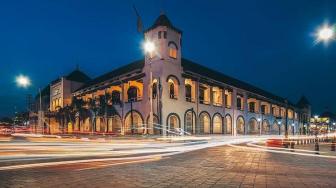
Get To Know Indonesian History in These 3 Tourist Attractions
Indonesia has gone through a lot of struggles to gain its independence.Let's reminisce about the moment by visiting some of the historical places in Indonesia!

Indonesia has gone through a lot of struggles to gain its independence.Let's reminisce about the moment by visiting some of the historical places in Indonesia!

He was born in Rokan Hulu, Riau, on November 5, 1784, and joined the struggle with Tuanku Imam Bonjol. After the Padri War, Tuanku Tambusai and his troops moved to the Peninsula to live and settle down.

Prince Diponegoro is a famous figure in Indonesia's history of independence.

TheIndonesia.id - The first president of Indonesia, Soekarno, is easily one of the most prominent figures in the country. Through his spirit and leadership, Indonesia managed to declare its independence after three hundred years of colonialism.
But before it all started, not all Indonesians know that Soekarno’s spirit of nationalism started to grow when he was living with nationalist Oemar Said Tjokroaminoto, or HOS Tjokroaminoto, in Jalan Peneleh, 7th Alley, No. 29-3, in Genteng subdistrict, Surabaya, East Java.
“From 1916 to 1921 were Soekarno’s golden era because it was during that time that his soul and personality were honed in the city of Surabaya,” the Dean of the Faculty of Humanities at Airlangga University Purnawan Basundoro said on Wednesday, June 15, as reported by Antara.
According to him, the story of Soekarno’s journey was more than mere life struggle and romance, but there was also raging nationalism spirit in him.
Soekarno was known to fight the injustice that happened in Indonesia under colonialism, and Basundoro said it was influenced by Tjokroaminoto and Soekarno’s birth city Surabaya.
“In the early 20th century, Soekarno boarded a place at Tjokroaminoto’s house, and he saw Surabaya as the base of nationalism, which means that it was in Surabaya that his nationalism was formed as well as the spirit to fight against the Dutch colonialism in Surabaya,” the scholar explained.
In her book, author Cindy Adams wrote that Tjokroaminoto introduced young Soekarno to many figures involved in a movement, who oftentimes paid a visit to the house. And that was why, even at such a young age, Soekarno already had a rich knowledge from different ideological perspectives.
At the time, he also wrote about Tjokroaminoto’s house that became the place where nationalism began for him, and he also wrote about his ideas in newspaper Otoesan Hindia owned by Tjokroaminoto.
“Bung Karno admitted that in Surabaya, he wrote not less than 500 essays in newspapers. It was also in that house that Soekarno first knew Alimin, Muso, Semaun, and SM Kartosuwiryo with their different ideologies.”
At the age of 20, with a political and ideological maturity, he found his own ideology Marhaenism. On July 1, 1932, newspaper Fikiran Rakjat wrote that Marhaen was an ideology with focus on the poor in Indonesia, whether they were laborer or not, including poor farmers that weren’t working for anyone but themselves.
“In details, in Adams’ book, Marhaenism is Indonesian socialism – a mix of nationalism, religion, and Marxism with gotong royong [mutual cooperation],” Basundoro said.
And on June 1, 1945, Soekarno introduced five national principles, which were Indonesian nationalism; internationalism or humanism, mufakat or democracy, social prosperity, and belief in one God.
“He was finding the values of Pancasila to unite new states to help other countries that were still under colonialism. He also didn’t want Indonesia to get disunited and wanted it to be independent including in economy, to have sovereignty in politics, and to have personality in culture,” Basundoro concluded.